If you're planning a mountain adventure like climbing Kilimanjaro, hygiene questions are really important. Some people might find it awkward to discuss this even with expedition organizers, but it's important to address it. In a multi-day journey where traditional bathrooms are unavailable and with fellow travelers is sometimes required, understanding the complexities of maintaining hygiene is essential.
From this article, you will learn about:
- Sanitary conditions in campsite kitchens
- Everything about drinking water during the expedition
- Shower options and how to take care of body and hair in the mountains
- Toilets on Kilimanjaro
- What to bring with you on the expedition
A week on Mount Kilimanjaro
When talking about the duration of an expedition to the summit of Kilimanjaro, we take into account that there are not only different routes but also various programs with varying numbers of days. At Altezza Travel, we offer programs ranging from five to eight days, and for example, an expedition that includes a descent into the crater takes a full 10 days. Here we'll generally refer to any expedition as a week-long one.
What's crucial to understand now is that for 5–8 days, you will be away from the familiar comforts of civilization, all while being in a challenging high-altitude environment. How do you ensure an acceptable level of body hygiene? What specific difficulties will you encounter during the expedition, and how can they be overcome?
Firstly, you won't have to worry about the food — professional mountain chefs will prepare meals throughout the entire expedition. Our menu is diverse, and numerous great reviews about the dishes we serve can be found on Tripadvisor. We take responsibility for the hygiene in the mountain kitchen. The only thing you need to think about is what favorite snacks to bring along, so you can indulge yourself a little on the way to the summit.
Drinking water is also not a cause for worry. We provide unlimited clean drinking water for all expedition members as well as for the mountain crew. Your guide will frequently remind you to stay hydrated, so there's no need to ration water. Supplies will be replenished continuously as we ascend - this responsibility rests with us.
We also provide water for washing at every camp. It's heated, allowing you to wash your face with warm water in the morning and brush your teeth — a refreshing start to each day. However, showers and baths are unavailable on Kilimanjaro. You'll need to let go of this luxury during the days you're away from the hotel. Portable showers are an option, and we'll provide information about that choice. In practice, some unprepared individuals might encounter slightly less comfort than they expect. It's wise to get ready for a week without access to a proper shower, using wet wipes to clean your body and warm water to clean your face instead.
If you're embarking on an expedition with a friend or a family member, you will, of course, be sharing a tent with them. However, if you're going solo and joining one of the Kilimanjaro hiking groups, you'll have to share your personal space for sleeping, changing, and personal care with a stranger of the same gender. This will be a fellow traveler whom you'll meet at the start of the expedition. The good news is that all expedition participants understand the unique circumstances and are in the same situation, making it easy to agree on comfortable cohabitation in the tent.
The situation is different in huts, which are available only on the Marangu route. These huts can accommodate at a time, and the beds are bunk beds, somewhat resembling a hostel setting. The administration of the national park handles the allocation of people in these huts, so we have . Just be aware of these conditions and prepare yourself mentally in advance.
Now, the most pressing question - restrooms. All camps on Kilimanjaro have public toilets. Their condition can differ, and how clean they are often depends on how busy both the route and the camp are. Lines can form when a group arrives at the camp. Imagine the experience of traveling on a train that arrives at a large station early in the morning, where all the passengers in the carriage need to use the restroom. The situation in the mountain camps is somewhat similar.
To make the experience easier for our climbers, we offer the option of bringing along a portable toilet. We strongly recommend taking advantage of this service. We'll provide more details on how this works, how it can benefit your expedition, and how to minimize costs for this option a little later.
There are other items that we recommend you bring on the expedition, such as wet wipes, sanitizers, sanitary pads, and other personal hygiene items.
How is food prepared during an expedition?
A team of mountain chefs and their assisting porters are responsible for the food in the mountains. The tasks of porters include transporting the food, utensils, and equipment for the dining tent.
Before cooking, the ingredients are washed with water brought from nearby mountain sources. The chef ensures that all kitchenware is clean. Porters set up folding tables and chairs in the dining tent, wipe them down and help serve breakfast, lunch, and dinner.
The chefs adhere to standard hygiene practices: they wear uniforms and also have disposable gloves, which they wear during meal preparation. We comply with all possible food handling guidelines given the expeditionary conditions.
After finishing breakfast, lunch, or dinner, the kitchen team washes the dishes, packs them away, and when breaking the camp, they pack up the tables, chairs, and dining tents, preparing them for transportation to the next camp.
Drinking water on Kilimanjaro
During expeditions on Kilimanjaro, water is sourced from local mountain springs. It is collected from streams and rivers, boiled, cooled, and then used for drinking, cooking, and brushing teeth. This practice is adopted by 100% of the operators working on Kilimanjaro.
The treated water tastes good and is safe for consumption. At Altezza Travel, we conducted independent research, taking samples from Kilimanjaro's mountain rivers and sending them to a lab. The results were satisfactory.
In the lab reports presented above, you'll see various metrics evaluating water quality. The final column sums up the results with a conclusion based on chemical analysis. Almost all metrics fall within "acceptable" limits, except for the Fecal coliform bacteria count. This measurement surpassed the set levels, leading the lab to conclude that it's "not acceptable" for consumption without further treatment like boiling. This is why boiling water on Kilimanjaro is a standard practice for everyone, including us.
Coliform bacteria are microorganisms found in the intestines of both animals and humans. They are usually harmless and even beneficial, as they aid in digestion. These bacteria are not inherently pathogenic, and their presence in open water sources is considered natural. Water containing up to 1000 units of coliform bacteria per 100 ml is deemed safe for activities like swimming and washing. Still, for drinking, the bacteria count should ideally not exceed zero units.
In a sample from the Last Water stream on the Marangu route, the coliform count was 15 units. Meanwhile, in the Maua River, which is part of the Lemosho and Machame routes, the count was 8 units. Although these numbers are relatively low, it's still advised to boil this water before drinking. This is a precaution we rigorously follow.
We also use tablets for quick water treatment and disinfection. Thanks to their active chlorine-based ingredient, these tablets purify the water, making it immediately drinkable. However, they do affect the taste of the water. Therefore, we recommend either drinking boiled water without using these tablets or bringing your own electrolytes for personal use. Upon your request, we can abstain from using tablets and stick to boiling, which is sufficient for disinfection.
You also have the option to drink bottled water during the expedition, just like in a hotel. If you would like to have this option, please order it in advance from your manager. Porters will carry bottled water, which incurs an extra cost as it requires us to hire an additional porter, cover their food, and provide for them during the expedition.
For cooking, we use boiled water from natural sources. Due to the lower atmospheric pressure at higher elevations, the boiling point of water decreases. For instance, at an altitude of 4600 meters (about 15,092 feet) above sea level (approximately the altitude of Barafu Camp), water only heats up to 85 °C (185 °F). At high altitudes, we resort to longer boiling times.
Throughout our 10 years of organizing Kilimanjaro expeditions, we've had no instances of water poisoning.
Personal hygiene in the mountains
While Altezza Travel provides such good catering that climbers from other tour operators often envy our group members, the matter of showers and hair-washing does present a genuine challenge that one must come to terms with.
However, we do our best to provide as much comfort as possible. At every camp, porters set up a portable sink that is regularly filled with hot water. Expedition members can always wash their face and hands with warm water, as well as brush their teeth. Those with short hair can even wash their hair using the sink. If you plan to do so, please be cautious to avoid catching a cold.
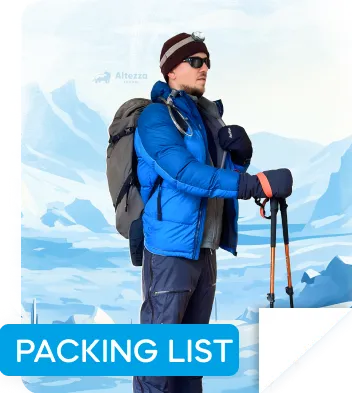
Showers are only available at camps along the Marangu route. Unfortunately, the water there is often cold. If you wish, you can rent a portable shower for the expedition. This setup (both the device and a separate shower tent) will be carried by porters, incurring additional costs. The service fee also includes a gas canister to heat the water, which will also need to be carried by porters.
The shower water is sourced from a river and heated with gas. Afterward, it's used to fill the device's tank. The portable shower has low pressure, and the mountain air is cold and it might be windy, making showers rarely comfortable. Throughout the expedition, you'll likely have the opportunity to shower about three times. Note that portable showers are not permitted along the Marangu route.
The portable shower isn't a very popular option, and we recommend using it only if you're certain you'll feel worse without it. You can reduce the cost by finding one or two people in your group who are willing to share the expenses.
The most popular body care item is wet wipes. Our own experience, along with numerous reviews from thousands of climbers, confirms that this is the optimal solution for mountain expeditions. However, it's essential to remember that wet wipes are not made of paper but of , which takes over 100 years to decompose in nature. It's crucial not to leave them on Kilimanjaro and take them away in a plastic bag.
Disposable towels can be a good alternative. They come in various forms, but the most convenient are those that are transported in small packages and expand in size when wet, after which they can be unfolded. They are even suitable for hair care.
For those with long or high-maintenance hair, dry shampoo can be invaluable. It quickly absorbs scalp oils and dirt, making the hair look fresher and more voluminous. Be sure to find suitable disposable towels and dry shampoo to bring along on your trip.
Also, prepare a sufficient amount of underwear and socks. Plan your underwear supply based on the number of days you will be on the expedition— one set for each day, plus a couple of extras. Use the same logic for socks but bring even more extras as feet can get wet.
Another crucial point: before starting the expedition, trim your nails, especially on your feet. Walking on rocky terrain in unfamiliar footwear, especially when descending, puts a lot of strain on your toes, including your toenails. They should not interfere with your walking. You may also bring a pair of nail scissors to use during the expedition.
Shaving is possible in the camps as warm water will usually be available. At the very least, men can shave their faces, although many prefer not to do so, postponing the shave until they return to the hotel.
Toilets
Finally, we tackle the most sensitive issue: how to manage bathroom needs both in camp and during transitions between camps. The situation is complicated by several factors: the presence of other people, which makes finding a private spot quickly difficult; the camp toilets, which aren't equipped with running water; and challenging weather conditions like cold and wind. Adding to these difficulties is the possibility of altitude-induced stomach problems.
Public Toilets on Kilimanjaro
Most camps on Mount Kilimanjaro are equipped with stationary toilets, maintained by the national park rangers. Remember that Mount Kilimanjaro is entirely within a national park, subject to specific regulations such as a ban on constructing permanent buildings. Despite this, public toilets have been built, consisting of small structures with holes in the ground. On the Marangu route, there are bathrooms with actual toilets you can sit on.
The quality and upkeep of toilet facilities differ between camps; some are more well-maintained than others. Generally, the higher you go in altitude, the more likely you are to encounter less well-maintained conditions. Other variables, like the season, how crowded a camp is at the time, and the size of your own group, can also influence the state of the restrooms.
The toilets see increased usage during high seasons and at peak hours when the camp is most populated. They require frequent cleaning — several times a day. In the high season, from , more than a hundred people may use a single toilet in a day. Two cleanings a day under these circumstances are often insufficient, leading to easy-to-imagine outcomes. Also, be prepared for queues, especially after the arrival of multiple groups at the camp and in the evening before bed.
We offer the option of a portable toilet, which you can either use individually or share with one or two other group members to share the cost. Don't hesitate to ask your mountain manager about this during your expedition planning; they will provide details and help you find suitable companions to share this service, which we recommend to everyone based on our experience.
Let's delve a little deeper into why a portable toilet on Kilimanjaro is convenient and how this service works.
Portable toilet in expeditions with Altezza Travel
A separate small tent is set up for the portable toilet. The major part of the for this option, as is the case with portable showers, goes towards the porters' wages, who carry and maintain the portable toilet kit.
The bio-toilet is convenient and resembles a regular home toilet. It consists of a seat with a water-filled reservoir. After use, the contents are flushed with water, meeting high sanitary standards. We often hear glowing reviews from those who have used the individual portable toilet on expeditions. People are grateful that we recommended this service, which significantly enhanced their comfort and overall experience on the expedition.
The portable toilet is serviced by porters. On average, cleaning takes about half an hour. The exact time depends on the proximity to a water source. For example, in Barafu, Kosovo, and Kibo camps, it takes about an hour to get water. Considering the service requirements, we do not allow a large number of people to use a single bio-toilet. The optimal number of users is 1–3, which allows us to maintain a high level of hygiene.
Please note that in the camps along the Marangu route, the use of portable toilets is prohibited. Climbers have to use the public toilets.
Toilet during transitions between camps
While there are no issues using the toilet while in camp, problems may arise during the multi-hour hikes from one camp to another.
The most straightforward and natural method for taking care of basic needs outdoors is to step away from the group and seek the privacy of bushes or rocks. For more serious actions, having toilet paper and wet wipes at your disposal is advisable. We also suggest bringing along a sanitary bag during the expedition. The bag will be useful for storing used personal hygiene items, which in the comfort of civilization are typically thrown away in a hotel bathroom bin.
If you opt to use plastic bags for waste management, make sure they're biodegradable. The use of plastic bags has been outlawed in Tanzania since 2019. Keep in mind that Kilimanjaro stands within a national park, and the principle of responsible tourism applies: you're expected to take out anything you bring in.
Nighttime toilet visits
Another challenging situation is the need to use the toilet during nighttime hours. On Kilimanjaro, night temperatures can plummet below 0°C (32°F), often accompanied by icy winds and potentially rain or snow. Waking up snug in a zipped tent and warm sleeping bag, braving the frigid, dark night is the last thing you'd want to do. Nonetheless, there's a handy trick that could make this easier.
It is possible to use portable urination bottles designed for both men and women, commonly used by travelers and drivers. These can be particularly useful in cold conditions or for those who have sleep issues and want to avoid exiting the tent multiple times during the night.
Be mindful that if you're sharing a tent with someone you don't know well, using a urinal bottle in their presence may be awkward. From our experience, however, visiting the toilet at night generally poses no problems.
Note that frequent urination is common at high altitudes. Following the guide's advice, you'll likely drink plenty of water to avoid dangerous dehydration. Additionally, many opt to take Diamox to aid in acclimatization and prevent altitude sickness. One of the side effects of this medication is increased urination, especially during the initial days of usage. As a result, you might find yourself leaving the comfort of your tent more than once during the night. Individual experiences may vary.
Interestingly, none of our team managers have ever felt the need to use urination bottles on expeditions. Traditional toilets have generally met all needs, and portable bio-toilets frequently earn particularly good reviews.
When it comes to toilet paper, rest assured that our guides always carry an ample supply for each expedition member, with a little extra for good measure. However, if you prefer, you're welcome to bring your own.
What to bring on your Kilimanjaro expedition
Let's revisit the list of hygiene items you'll need to prepare for your expedition to Kilimanjaro.
Hygiene items check-list:
- Wet wipes (disposable towels)
- Hand sanitizer ;
- Toothbrush and toothpaste
- Deodorant
- Shaving supplies (optional)
- Personal hygiene items such as sanitary pads (if needed)
- Lip balm (especially useful in cold weather)
- Dry shampoo (if needed)
- Nail scissors, clippers, and a nail file
- Change of underwear (one set per day plus extra)
- Optionally, a portable urination bottle (if you prefer not to leave your tent at night)
Note that you won't find dry shampoos and water electrolytes in Tanzania. If these items are essential to you, make sure to bring them from abroad.
Some supplies can even be purchased directly in Tanzania before the expedition starts. At Altezza Travel, we always have a stock of toothpaste, toothbrushes, sanitary tampons, and wet wipes. You can ask the manager for these items a day before the start of your journey.
We assure you that there won't be issues with drinking water during the expedition, but if you specifically prefer bottled water, please book this option through the manager in advance.
We'd also like to remind you to not leave any trash within the national park area. The responsible tourism principle kicks in as soon as you pass the entrance gate. We kindly ask you to give all your waste to the guides, who carry special garbage bags for this purpose.
Periodically, we sponsor clean-up teams to clean the Kilimanjaro trails, as some trash inevitably accumulates throughout the season along the paths and around the camps. Our aim is to leave no trace behind after Altezza Travel expeditions. Your cooperation in this regard is highly appreciated.
If you have any additional hygiene-related questions, feel free to ask your manager. It's better to be fully informed and well-prepared for your upcoming adventure rather than face difficulties along the way.
Don't be daunted by minor inconveniences; they are all surmountable. The pleasure and vivid memories you'll gain will outweigh any potential discomfort during the expedition. Kilimanjaro awaits!
All content on Altezza Travel is created with expert insights and thorough research, in line with our Editorial Policy.
Want to know more about Tanzania adventures?
Get in touch with our team! We've explored all the top destinations across Tanzania. Our Kilimanjaro-based adventure consultants are ready to share tips and help you plan your unforgettable journey.

















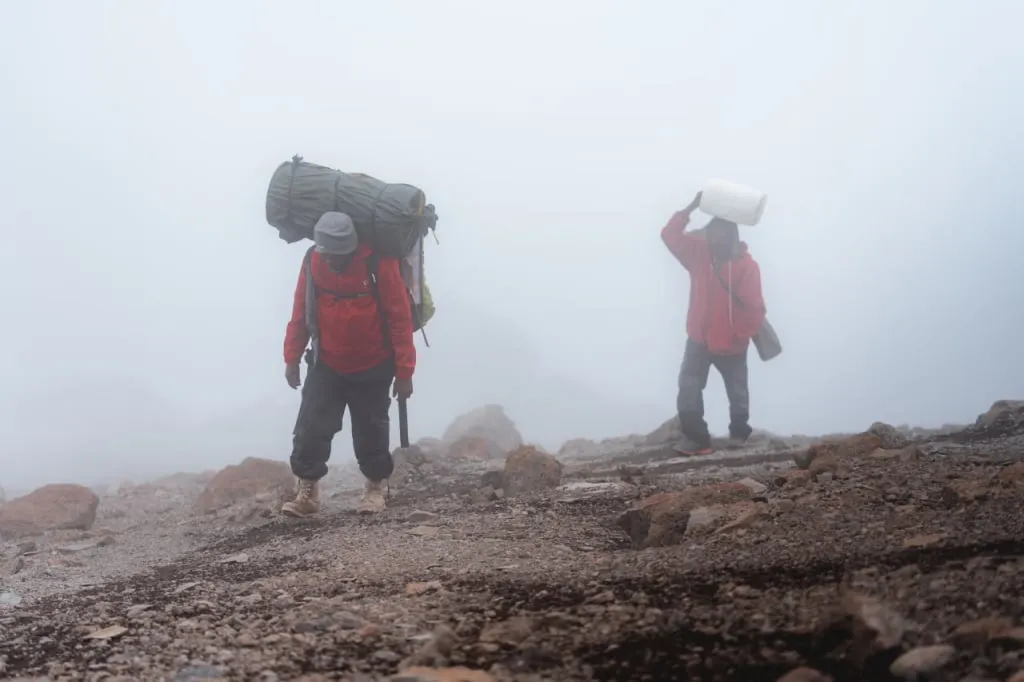





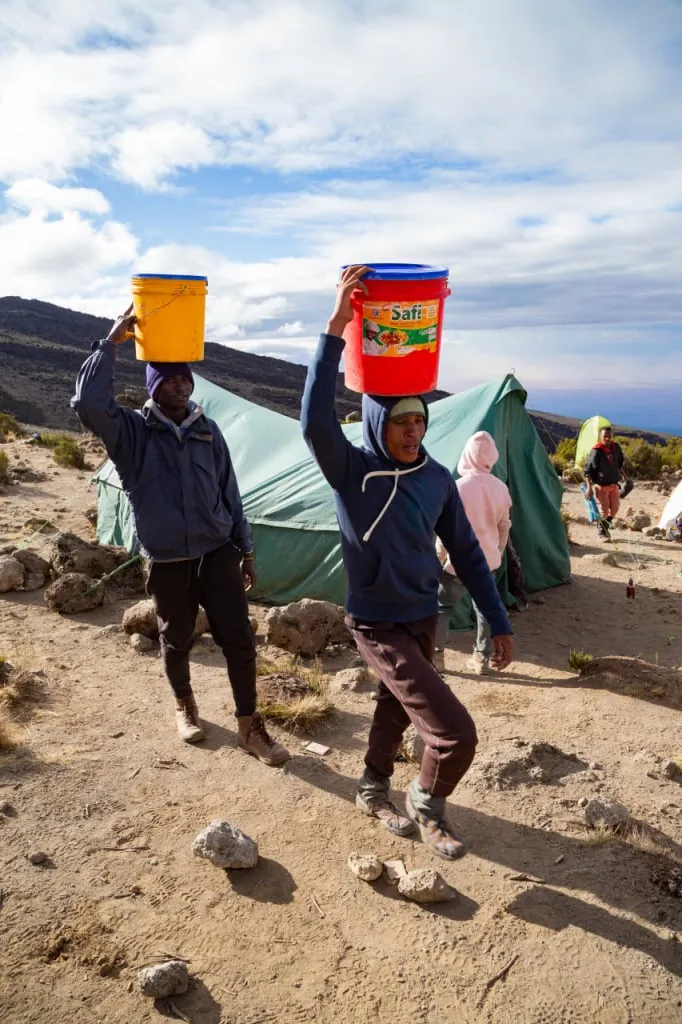

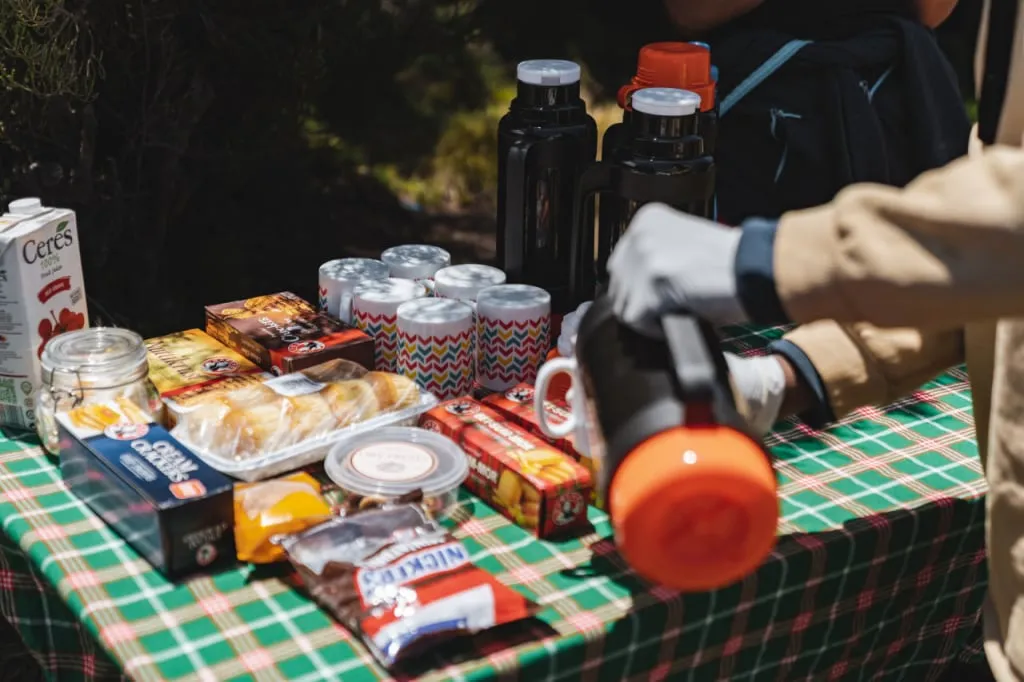


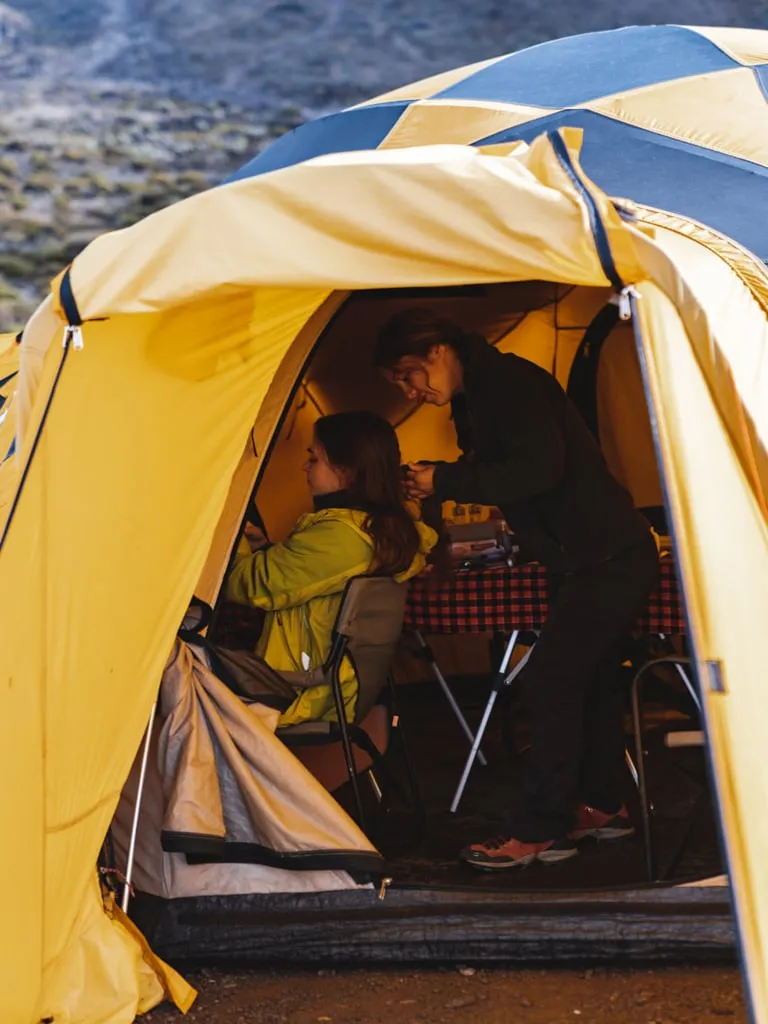
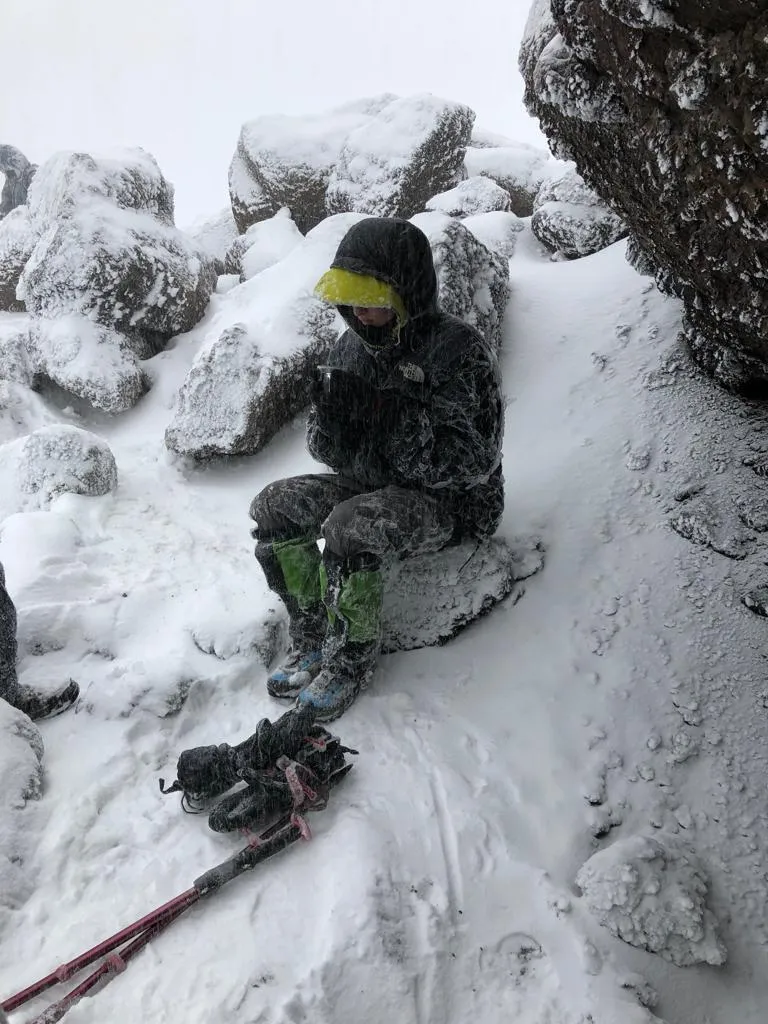
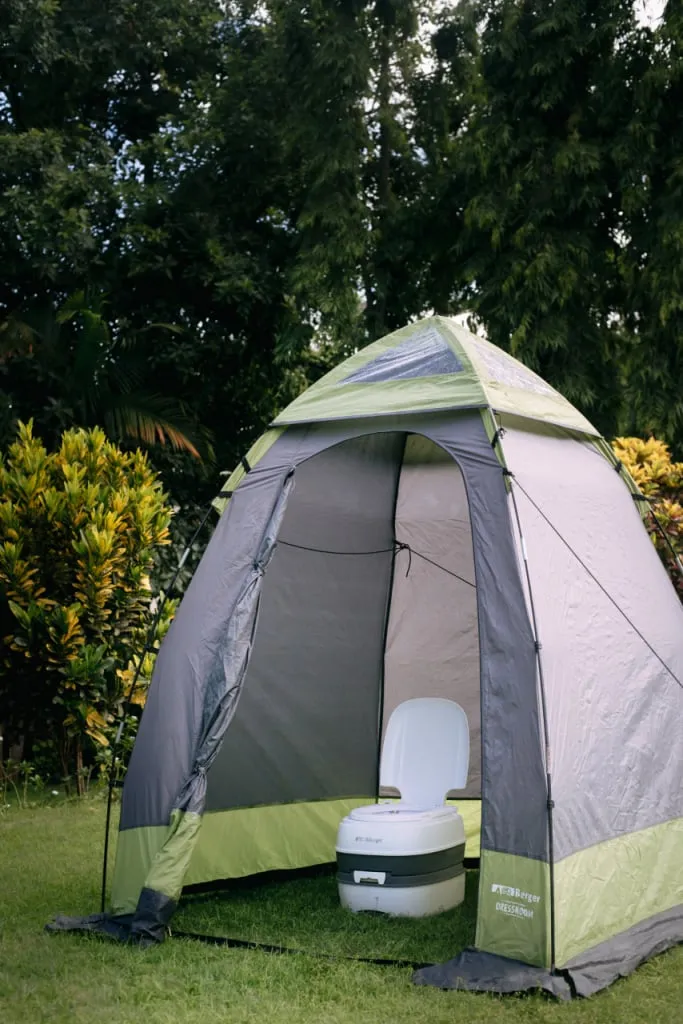
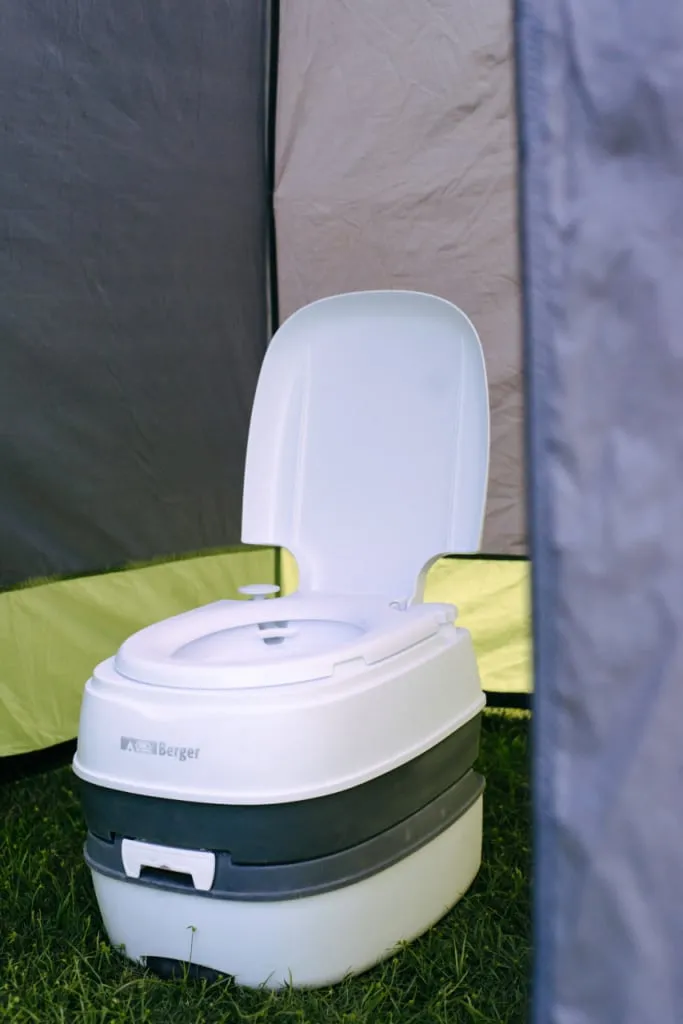
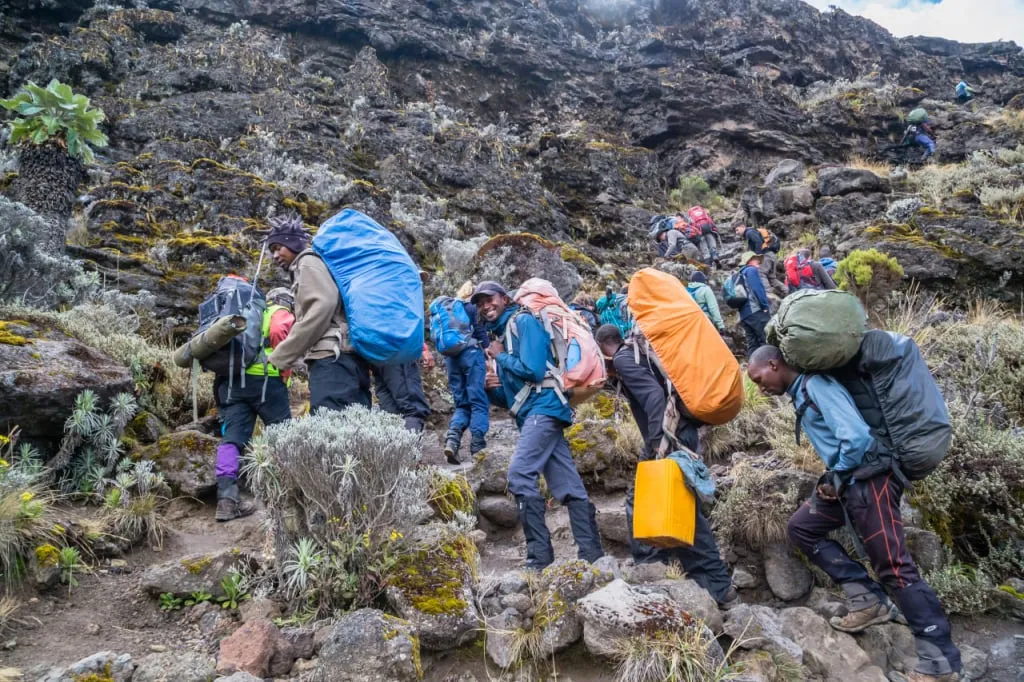
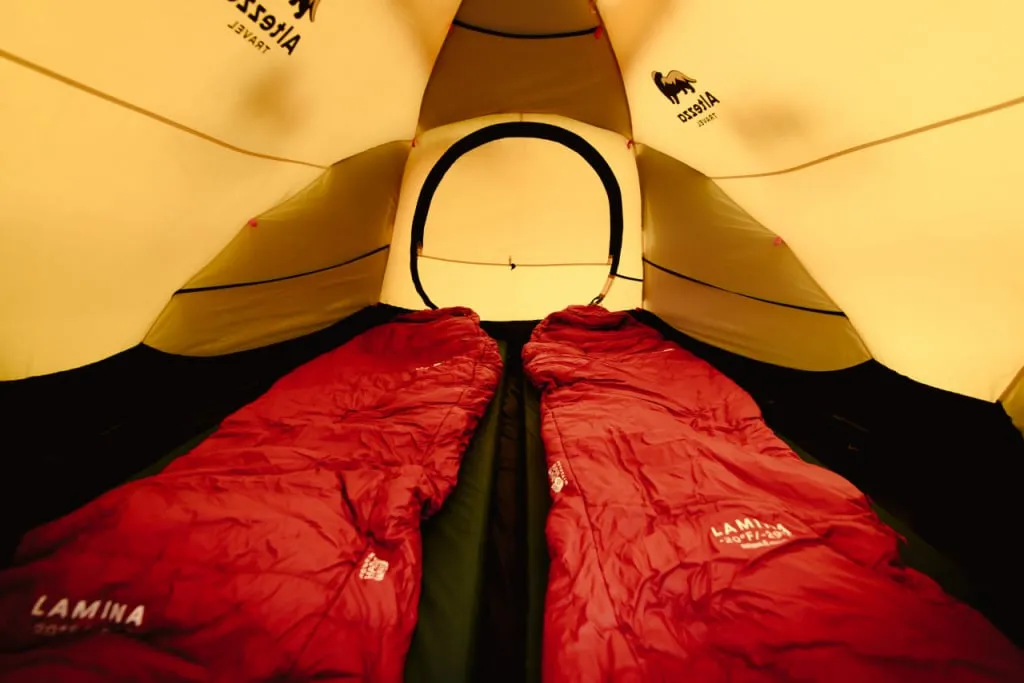
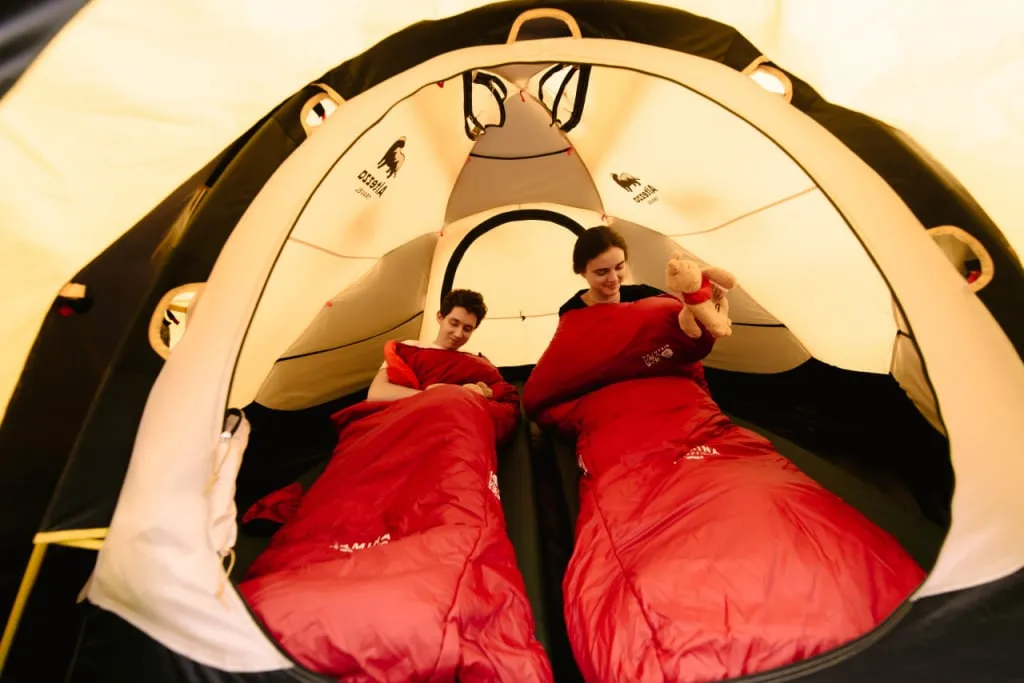

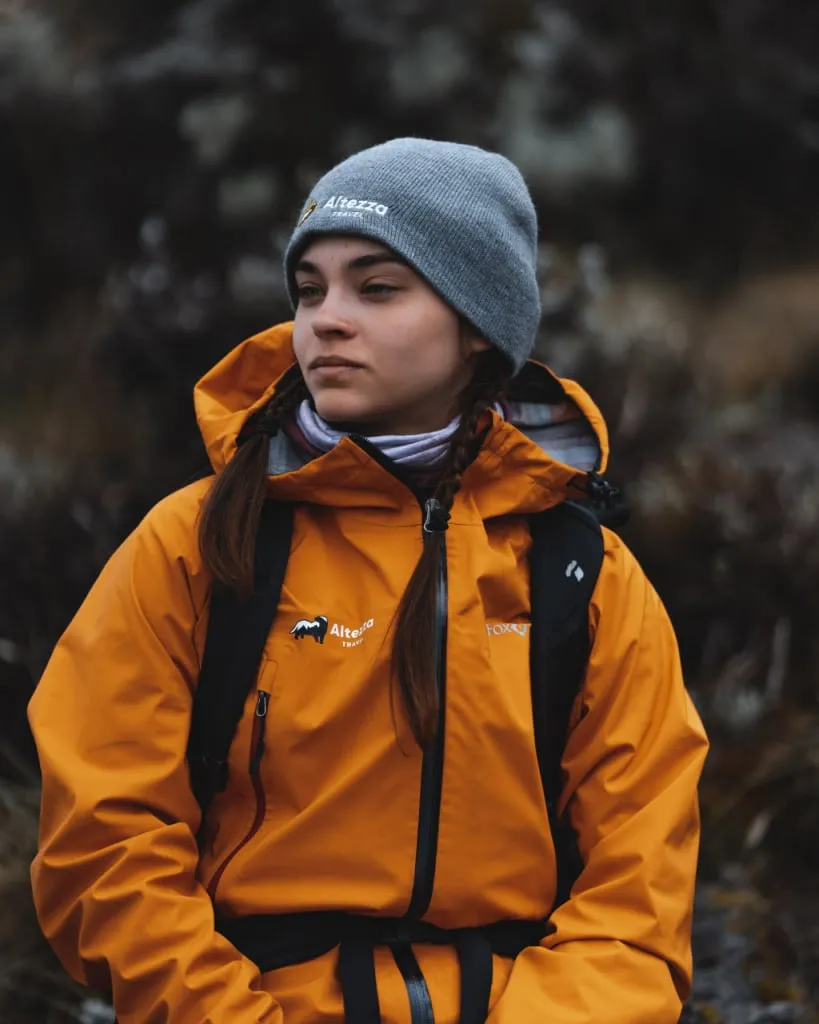
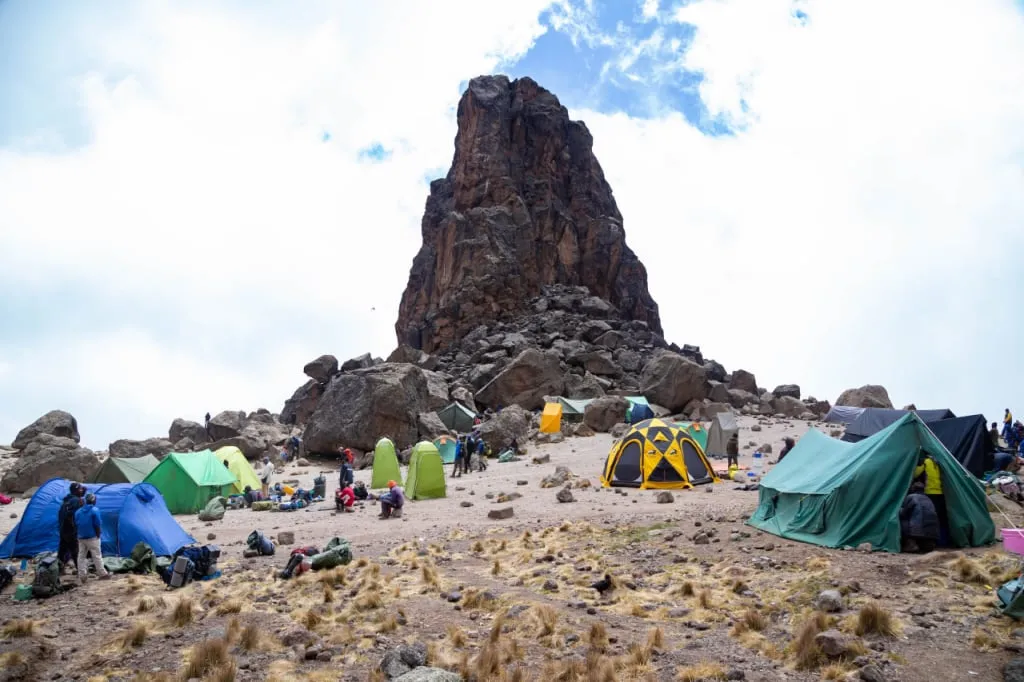

Hi, nice article indeed! But I have a question: where do all the wastewater from showers, cooking, toilets go?